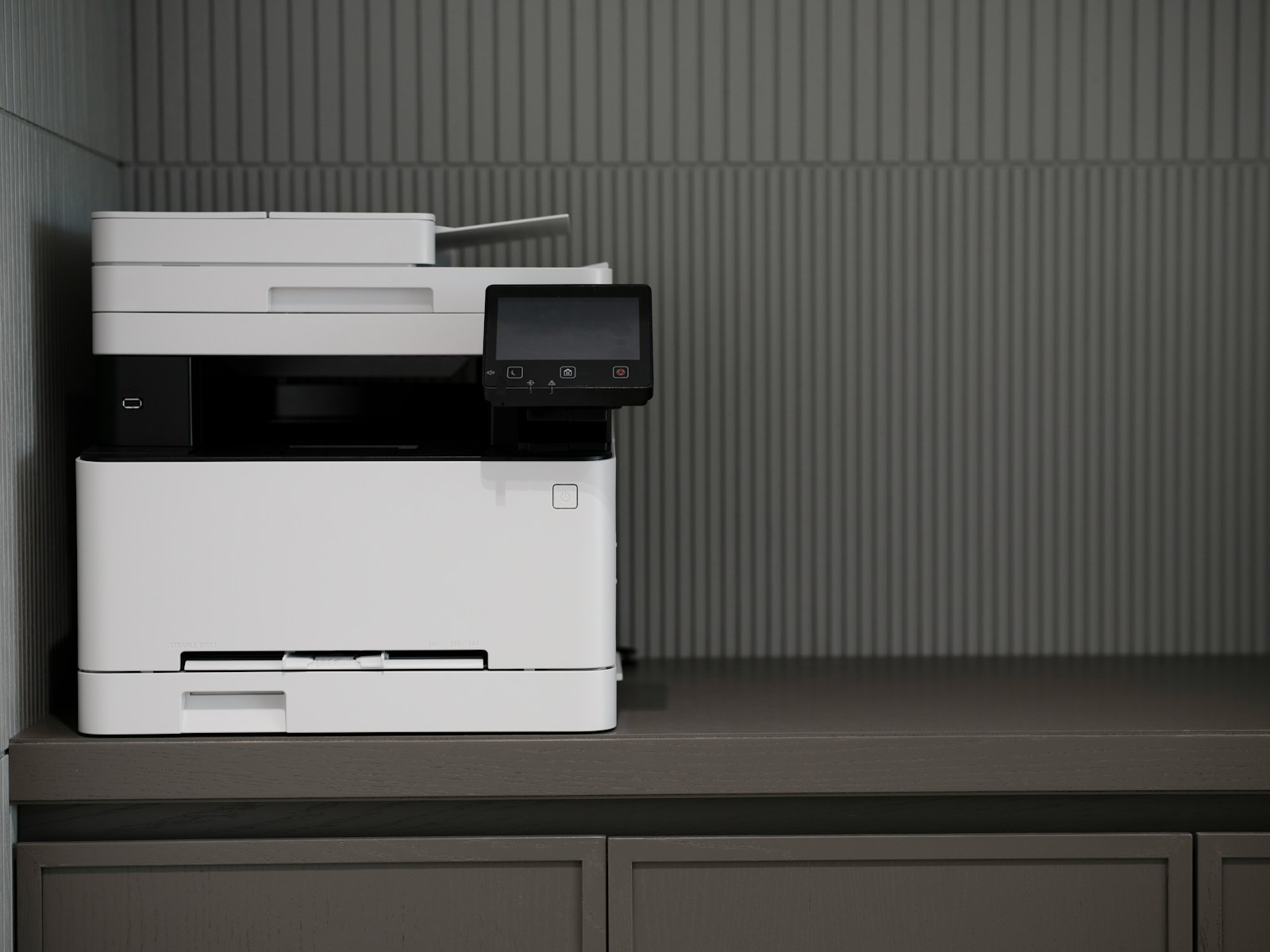Printers are essential tools in homes and offices everywhere. Understanding how printers are made involves looking at various steps, from design to assembly. Each type of printer, like inkjet or laser, has a unique manufacturing process that combines mechanical and electronic parts.
The process starts with designing the printer’s circuit boards and mechanical components. Engineers plan how the printer will function and its different components, like the print head and paper feeder. Once the design is finalized, factories produce the individual parts and assemble them into a complete printer.
Printers undergo testing to ensure they work correctly and meet quality standards. Technicians check if the printer can print documents accurately and efficiently. After passing quality checks, printers are packaged and sent out to retailers and customers, ready for use.
The Making of a Printer: A Journey Inside the Factory
Designing the Blueprint
It all starts with a vision. Engineers and designers brainstorm ideas, sketching out the printer’s form and function. They consider factors like size, print quality, speed, and cost, creating a blueprint for the manufacturing process.
Manufacturing the Parts
The printer’s components are produced using various methods. Plastic parts are often molded, while metal parts may be stamped or machined. Circuit boards are populated with tiny electronic components, and the printhead, the heart of the printer, is meticulously assembled.
Assembling the Printer
In a carefully choreographed process, the individual parts come together on the assembly line. Skilled workers and automated robots work in tandem, attaching components, connecting wires, and securing screws. The printer takes shape, step by step.
Testing and Quality Control
Before a printer leaves the factory, it undergoes rigorous testing. Each function is checked, from paper feeding to ink cartridge recognition. Print quality is assessed, and any defects are identified and corrected. This ensures that only printers meeting high standards reach consumers.
Packaging and Distribution
The finished printers are carefully packaged to protect them during shipping. They are then distributed to retailers and online stores, ready to be purchased by customers who will use them to print documents, photos, and more.
Different Types of Printers
Inkjet Printers
Inkjet printers use tiny nozzles to spray ink onto paper, creating text and images. They are popular for home use due to their affordability and versatility.
Laser Printers
Laser printers use a laser beam to create an image on a drum, which then attracts toner powder that is transferred to paper. They are known for their speed and high-quality output, often used in offices and professional settings.
3D Printers
3D printers create three-dimensional objects by layering materials like plastic or metal. They are revolutionizing manufacturing, prototyping, and even medical applications.
Printer Components
| Component | Function |
|---|---|
| Printhead | Delivers ink or toner to paper |
| Paper feed mechanism | Feeds paper into the printer |
| Ink or toner cartridges | Store ink or toner |
| Motors | Drive various printer functions |
| Control panel | Allows user interaction |
| Power supply | Provides electricity to the printer |
Key Takeaways
- Printers are designed and assembled from mechanical and electronic parts.
- Each printer type has a different manufacturing process.
- Quality testing ensures printers function correctly before shipping.
History and Evolution of Printers
Printers have transformed from simple machines meant for mass communication to sophisticated devices with varied applications. Their development showcases significant milestones, leading to the advanced technology we use today.
Invention and Impact of the Printing Press
In the 1440s, Johannes Gutenberg invented the printing press. This machine revolutionized communication and made books more accessible. Before this invention, scribes copied texts by hand. Gutenberg’s press used movable type, making it faster and cheaper to produce books.
This invention had a profound effect on society. It boosted literacy rates and spread knowledge. The ability to mass-produce written material changed the way information was shared, laying the groundwork for modern printing technology.
Advancements from Dot Matrix to Laser Technology
Dot matrix printers appeared in the 1970s. They used a print head that moved back and forth, striking an ink-soaked ribbon against paper to form characters. These printers were noisy but reliable, making them popular in offices.
In 1977, Gary Starkweather from Xerox introduced the first laser printer. The Xerox 9700 used a laser beam to produce high-quality printouts quickly. The Apple LaserWriter in 1985 and HP’s LaserJet in 1984 followed, cementing laser printers as a staple in professional settings.
Laser technology improved speed and quality, making printers more efficient.
Inkjet Printers and Digital Revolution
Inkjet printers emerged in the 1980s. Canon and HP played key roles in their development. These printers sprayed tiny droplets of ink onto paper, allowing for color printing. They quickly became popular for home use due to their affordability and versatility.
The digital revolution further enhanced inkjet technology. The rise of personal computers made printers an essential accessory. Innovations like 3D printing broadened the applications of printing technology, moving beyond ink and paper.
Manufacturing Process and Technology
Printing devices, from inkjet to laser systems, require a structured and advanced process for their production, ensuring high-quality output and reliable performance.
Material and Component Formation
Printers use a range of materials for their construction, including plastic and metal. Key components like the body and internal structures are crafted using injection molding. This process involves shaping materials into precise forms, vital for both inkjet and laser printers.
Other important parts include the printhead and toner cartridges. For inkjet printers, the printhead is formed with microscopic nozzles that spray ink. Epson is a leader in this technology. Laser printers rely on toner and a laser beam to transfer images. The toner cartridge must be precisely made to ensure even distribution of toner on the paper. 3D printing technology can also assist in creating customized parts.
Assembly and Quality Control
Once materials are formed, assembly starts. Parts are put together in a sequence to ensure compatibility. The printhead, cartridges, and other elements are installed carefully.
After assembly, quality control is essential. Each printer undergoes rigorous testing. They check for alignment of the printhead and proper ink or toner flow. They also test the final output at 300 dpi or higher. Modern printers often feature thermal print heads or continuous inkjet systems, requiring high precision. Through these steps, manufacturers ensure each printer meets strict standards for performance.
Frequently Asked Questions
Printers are complex devices that involve many steps during manufacturing and various technologies for functionality and efficiency. Here are answers to some common questions about how printers are made and operate.
What are the steps involved in the manufacturing process of printers?
Manufacturing printers involves several key steps. First, designers create a prototype. Then, essential electronic circuits and components are assembled. This includes the print head, which applies ink or toner to paper. Final assembly integrates all parts into a single unit, followed by testing for quality.
Can you describe the functionality of a printer?
A printer transfers digital data to a physical medium, like paper. It converts electronic information from a computer into text and images. The printer receives data, processes it, and applies ink or toner to deliver the final print.
What is the mechanism behind printers’ ability to operate quickly?
Printers use advanced processing units to handle data at high speeds. High-speed motors move paper through the printer. Efficient ink or toner transfer systems ensure rapid application of text and images without delay.
How do printers reproduce color in the printing process?
Printers use a combination of cyan, magenta, yellow, and black (CMYK) inks to reproduce color. The printer mixes these inks in various proportions to create a wide range of colors. Each color is applied in layers to form the final image.
What are the production methods for 3D printers?
3D printers are produced using advanced manufacturing techniques. First, components are fabricated, including print heads and chassis. Electronics and software are installed to control printing processes. Assembly involves integrating all parts to ensure precision in creating 3D objects.
What technology does a laser printer use to produce printed materials?
Laser printers use laser beams to create images on a drum. The drum then attracts toner particles, which are transferred to paper and fused with heat. This technology ensures sharp and high-quality text and images.







